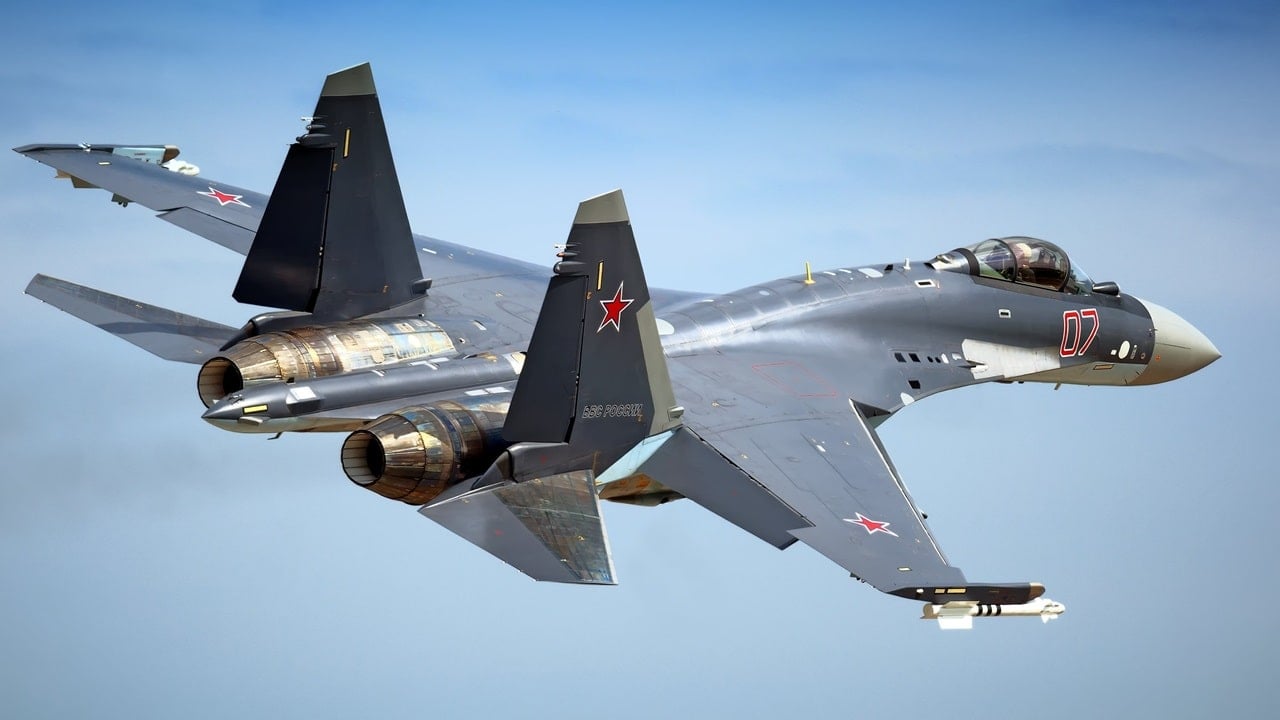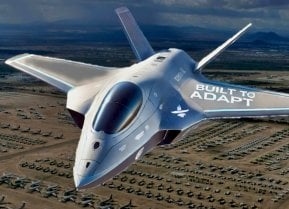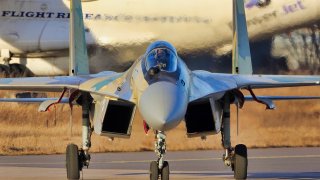Russia's Su-35 Flanker-E Fighters: 'Falling Out of the Sky Like Flies' in Ukraine
The Su-35 "Flanker-E" was Russia's bid to keep pace with Western and Chinese military aviation, but it has faced challenges in Ukraine. Designed as a fourth-generation fighter with advanced avionics, stealth capabilities, and long-range strike abilities, the Su-35 has struggled in the conflict.
Summary and What You Need to Know: The Su-35 "Flanker-E" was Russia's bid to keep pace with Western and Chinese military aviation, but it has faced challenges in Ukraine. Designed as a fourth-generation fighter with advanced avionics, stealth capabilities, and long-range strike abilities, the Su-35 has struggled in the conflict.
-Ukrainian forces, armed with advanced anti-aircraft systems, have forced Russia to use the Su-35 in ways it was not designed for, such as low-altitude, close-range missions.
-While still capable, the Su-35's performance has been limited by the changing dynamics of the battlefield, and its impact on Russia's overall war effort is less critical than anticipated.
Su-35: Russia’s Powerhouse Fighter Struggles in the Ukraine War
The Su-35 “Flanker-E” was Russia’s attempt to keep pace with their American and Chinese great power rivals. On paper, it’s a powerhouse. In practice, the Su-35 has had a mixed record. This is not because the Russians are incapable of building competitive warplanes.
They’ve got those.
It is more likely because the Su-35 is a Russian warbird that incorporates many Western military components, making the production of these birds difficult as well as the fact the Russians have had to use the Su-35 in ways the plane was not designed to be used.
The Su-35 Explained
Here's what we know: the Su-35 is a fourth-generation aircraft. What that means is that it is basically a hybrid between the fourth-generation birds that have existed since the 1970s and the newer, fifth-generation warplanes. This plane is equipped with a state-of-the-art avionics package, it has stealthier capabilities than most fourth-generation warplanes. It can carry a robust suite of weapons into battle. The Su-35 is fast and has a decent range.
Moscow envisioned using the bird as a long-range combat platform. In the age of advanced anti-aircraft capabilities, Russia’s military wanted a platform that could launch over-the-horizon strikes on distant enemy targets. But war is the ultimate test. The Ukrainians have innovated tactics to deploy against the Russians, degrading Russia’s obvious advantages in the air war. Phased Away Tracking Radar to Intercept Target (PATRIOT) missile batteries and other anti-aircraft systems have been brought to bear in ways that have forced the Russians to deploy the Su-35 in lower-altitude, closer-range ways.
The Enemy Gets a Vote
Of course, the Russians are not the only country that has had to adapt to a dynamic combat environment. For example, in the Second World War, despite being designed to fly at higher altitudes, American and British bombers over Europe were made to fly lower and slower to ensure the accuracy of their bombs. While that was eighty years ago and technology has certainly evolved since those gruesome days of world war, the logic of war remains the same as it always has.
That logic is simple: the enemy always gets a vote.

Therefore, Ukraine has managed to negate the inherent strengths of the Su-35 as an “over-the-horizon” warplane. That doesn’t mean the Su-35 is a slouch. It just means it cannot—and has not—operate to its fullest capabilities because the kind of war it is fighting is fundamentally different from the kind of war it was designed to fight.
Even the manufacturer of the Flanker-E, Komsomolsk-on-Amur has stated that the warplane is not performing as advertised in Russia’s ongoing war in Ukraine. The Ukrainians have downed multiple variants of this airplane, and they don’t appear to be abating in their aims to destroy these aircraft.
What’s more, Russia needs to have air support flying in at closer ranges and lower altitudes, meaning that the Su-35 will never perform optimally.
The Su-35 in Perspective
Still, the Russians have many other warplanes at their disposal, and they’ve been able to handle their own against the innovative Ukrainians in combat. Sure, the Ukrainian military has surged into Russia, taking a 621-mile area, but the Ukrainian forces are spread thin.
The Russians, recovering from the initial shock of the Ukrainian offensive, are likely readying a massive counterattack. Whether the Russian counterattack deploys the Su-35 or not remains to be seen.
But the Su-35, regardless of what may happen with it, is not such an important system for Russia that not being able to use this bird to its fullest would harm their war effort. And that’s the key here.
Author Experience and Expertise: Brandon J. Weichert
Brandon J. Weichert, a National Interest national security analyst, is a former Congressional staffer and geopolitical analyst who is a contributor at The Washington Times, the Asia Times, and The-Pipeline. He is the author of Winning Space: How America Remains a Superpower, Biohacked: China’s Race to Control Life, and The Shadow War: Iran’s Quest for Supremacy. His next book, A Disaster of Our Own Making: How the West Lost Ukraine, is due October 22 from Encounter Books. Weichert can be followed via Twitter @WeTheBrandon.
All images are Creative Commons or Shutterstock.
From the Vault
Russia Freaked Out: Why the U.S. Navy 'Unretired' the Iowa-Class Battleships
Battleship vs. Battlecruiser: Iowa-Class vs. Russia's Kirov-Class (Who Wins?)


